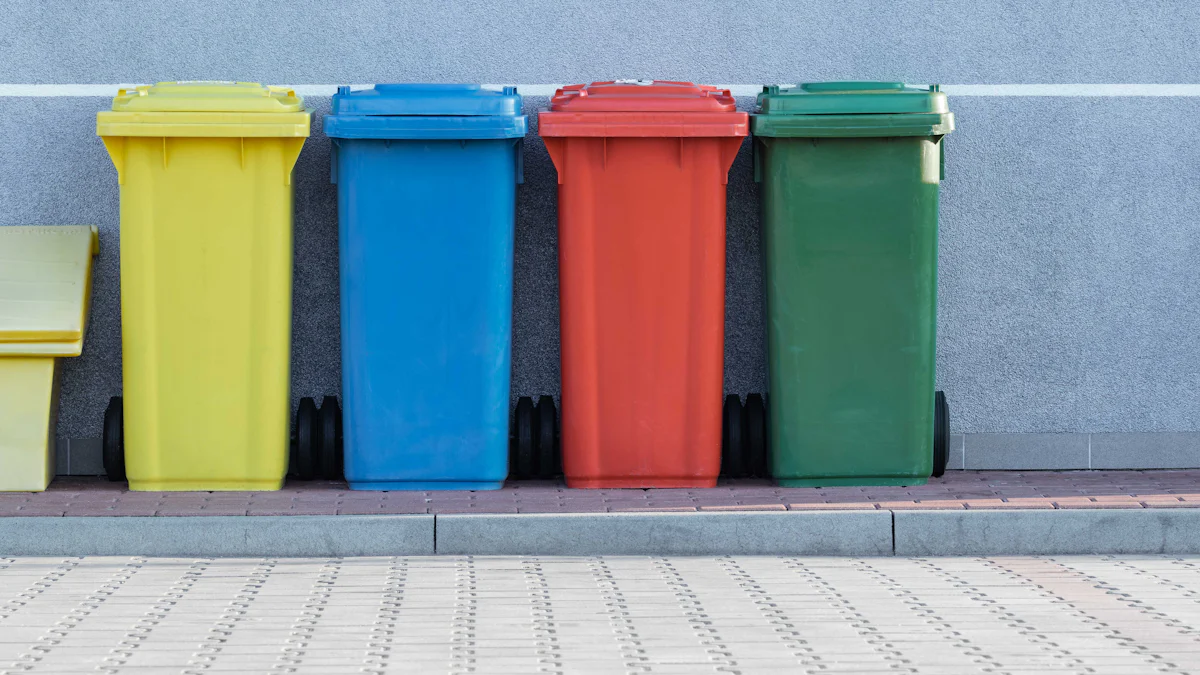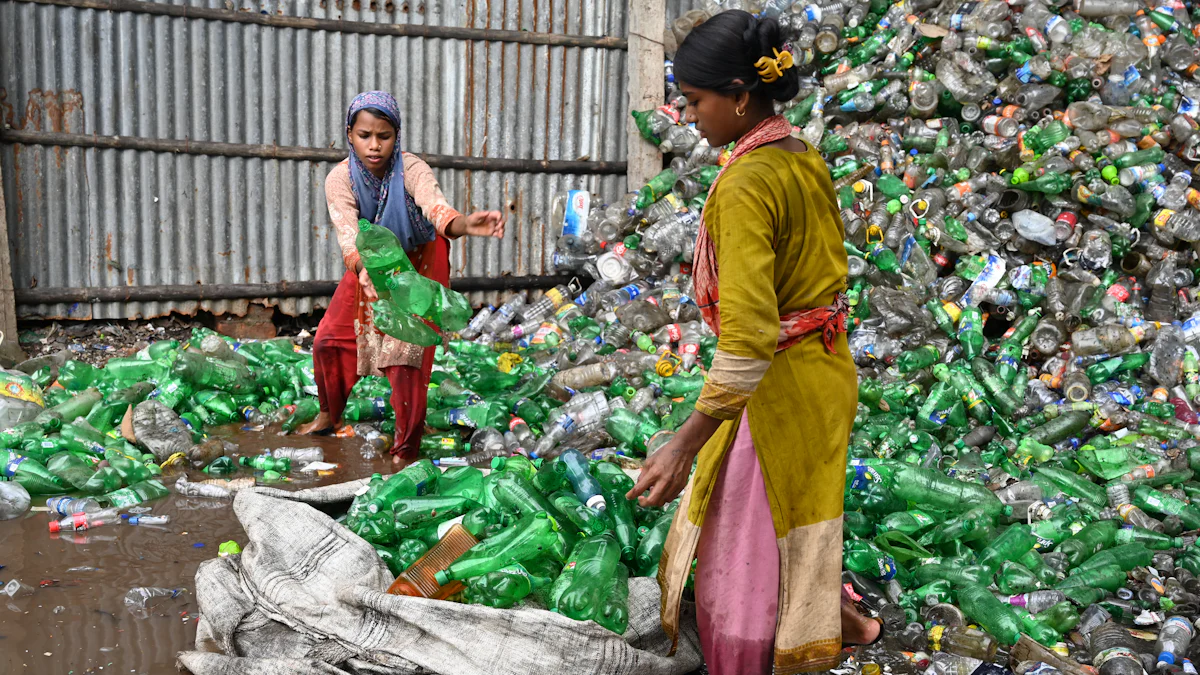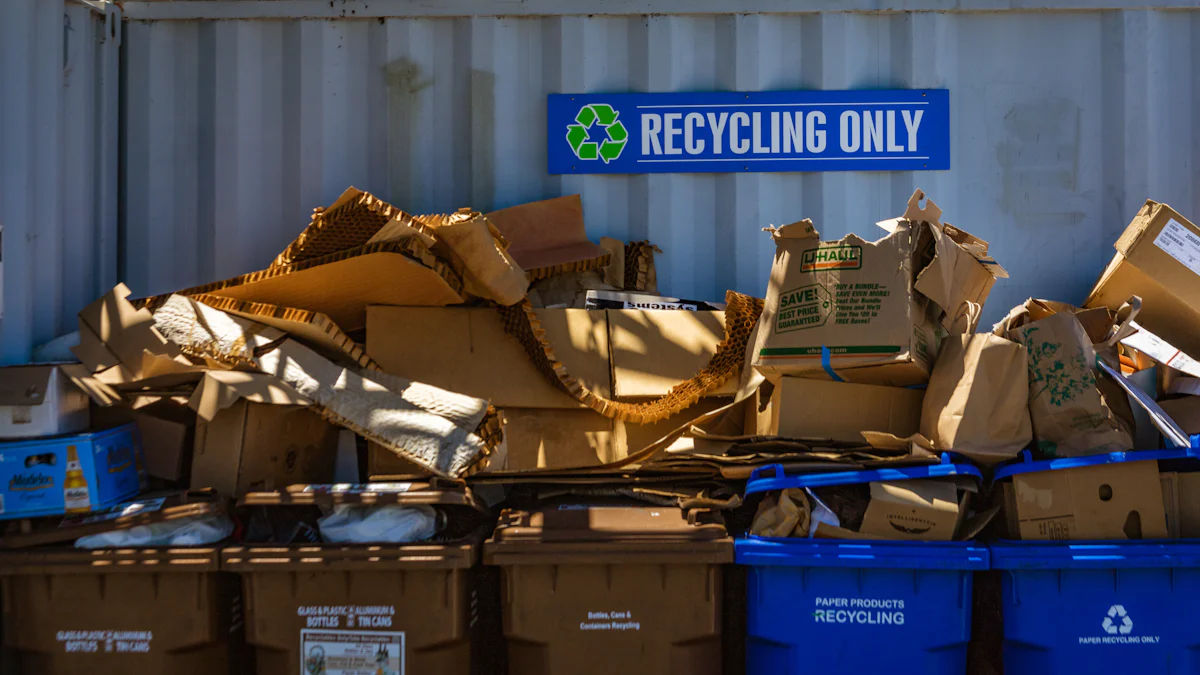Imagine turning trash into a billion-dollar business. One Chinese firm has achieved this remarkable feat by transforming waste into valuable resources. Their success stems from embracing circular economy models, which focus on eliminating waste, keeping materials in use, and regenerating natural systems. For example, they rethink resource use by incorporating recycled materials and ensure products are reused or responsibly recycled. These principles not only drive profits but also protect the environment. You can see how this approach creates a win-win for businesses and the planet.
Key Takeaways
- The circular economy turns trash into useful materials, helping the planet.
- Cutting waste, reusing items, and renewing resources are important ideas.
- These ideas help companies grow while keeping nature safe.
- Using circular economy methods can make money and create jobs for people.
- Working together, businesses and governments can expand these eco-friendly models.
- New technology and teamwork worldwide will improve the circular economy’s future.
Understanding Circular Economy Models
Defining Circular Economy
You might wonder what makes circular economy models so unique. Unlike traditional economic systems that follow a “take-make-dispose” approach, the circular economy focuses on sustainability. It is a systems solution framework designed to tackle global challenges like climate change, waste, and pollution. This model operates on three core principles: eliminating waste and pollution, keeping materials in use at their highest value, and regenerating natural systems. By shifting to renewable energy and materials, the circular economy aims to decouple economic growth from the consumption of finite resources. This approach not only benefits the environment but also creates opportunities for innovation and long-term economic stability.
Principles of Circular Economy
Reducing Waste
Reducing waste lies at the heart of circular economy models. You can rethink how resources are used at every stage of a product’s lifecycle. This means designing products that generate less waste and finding ways to minimize environmental impact. For example, companies can adopt practices that eliminate unnecessary packaging or use biodegradable materials. These steps ensure that waste is no longer seen as an inevitable byproduct of production.
Recycling and Reuse
Recycling and reuse extend the life of materials, keeping them in circulation for as long as possible. You can see this principle in action when old products are refurbished or broken items are repaired instead of discarded. Recycling also transforms waste into raw materials for new products, reducing the need for virgin resources. This process not only conserves materials but also reduces the strain on landfills and ecosystems.
Regeneration of Resources
Regenerating natural systems ensures that economic activities restore and enhance biodiversity. You can support this by using practices like composting organic waste or planting trees to offset resource use. These efforts help replenish ecosystems and maintain the balance of natural resources. By prioritizing regeneration, circular economy models contribute to a healthier planet.
Importance of Circular Economy in Waste Management
Circular economy models play a vital role in improving waste management. They minimize waste by keeping it out of landfills and promoting cleaner ecosystems. You can see how innovative practices like recycling, composting, and waste-to-energy conversion transform waste into valuable resources. These methods reduce environmental pollution and lower greenhouse gas emissions. By adopting these strategies, you help create a sustainable future where waste becomes an opportunity rather than a problem.
Case Study: The Chinese Firm’s Success

Overview of the Firm
Industry Background
The Chinese firm at the center of this success story has deep roots in industrial innovation. Its origins trace back to the Rong family, one of the most influential industrialist families in pre-1949 China. This family played a pivotal role in shaping China’s industrial landscape during the late 19th century. They successfully navigated political transitions and economic reforms, building a legacy of resilience and adaptability. This historical foundation laid the groundwork for the firm’s modern-day achievements in waste management and sustainability.
Challenges in Waste Management
Before adopting circular economy strategies, the firm faced significant hurdles in waste management. These challenges mirrored global issues in recycling and waste processing.
| Challenge | Description |
|---|---|
| Complexity & Fragmentation | Recycling systems were fragmented, with inconsistent services across regions. This made it difficult to streamline operations. |
| Confusion Over Material Recyclability | Many people were unsure about what could be recycled. This led to contamination, where non-recyclable materials ruined recyclable ones. |
| Growing Plastic Crisis | Plastic waste was a major issue. Most plastic products were not designed for recycling, contributing to environmental degradation. |
These obstacles highlighted the need for innovative solutions to transform waste into valuable resources.
Circular Economy Strategies Employed
Recycling Innovations
The firm introduced groundbreaking recycling methods to address inefficiencies. By identifying gaps in recycling supply chains, it partnered with advanced facilities to improve metal recycling. These efforts ensured that materials stayed in circulation longer, reducing the need for virgin resources.
Upcycling Waste into High-Value Products
You can see the firm’s creativity in how it upcycled waste into premium products. For example, it converted industrial byproducts into construction materials and consumer goods. This approach not only reduced waste but also created new revenue streams.
Waste-to-Resource Technologies
The firm invested heavily in waste-to-resource technologies. It implemented the ’10–100–1,000′ strategy, which focused on recycling industrial waste and developing efficient waste-collection systems. Pilot projects, like those in the Suzhou New District, showcased how these technologies could transform waste into energy and raw materials.
Achieving $1B Revenue
Diversified Revenue Streams
The firm diversified its income by tapping into multiple markets. It sold recycled materials, upcycled products, and energy generated from waste. This multi-pronged approach ensured steady growth.
Strategic Partnerships
Collaboration played a key role in the firm’s success. It formed partnerships with local governments and private enterprises to scale its operations. These alliances helped it access advanced technologies and expand its reach.
Scaling Operations
The firm scaled its operations by converting industrial parks into eco-industrial hubs. Tax breaks and government incentives supported this expansion. These measures allowed the firm to replicate its circular economy models across different regions, driving its revenue to $1 billion.
Economic and Environmental Impact

Financial Benefits
Revenue Growth
You can see how the firm’s circular economy practices directly contributed to its impressive revenue growth. By transforming waste into valuable resources, the company tapped into multiple markets, including recycled materials, upcycled products, and waste-to-energy solutions. These diversified revenue streams ensured consistent financial returns. Circular economy models also foster innovation, which opens up new opportunities for businesses to generate income while addressing environmental challenges.
Job Creation
The transition to circular economy models creates significant employment opportunities. For example, recycling generates 50 times more jobs than traditional waste disposal methods. Repair jobs provide 200 times more employment compared to landfills and incineration. Globally, the circular economy could create up to 45 million new jobs in waste management. You can see how this approach not only supports economic growth but also drives innovation in industries like renewable energy and sustainable agriculture.
Environmental Benefits
Emissions Reduction
Circular economy practices play a crucial role in reducing greenhouse gas emissions. Manufacturing and product use account for nearly 45% of global emissions. Recycling and reusing materials help cut emissions by keeping resources in circulation. Alternatives to landfilling, such as composting organic waste and waste-to-energy technologies, further minimize environmental pollution. By adopting these methods, you contribute to a cleaner and more sustainable planet.
Resource Conservation
Resource conservation is another key benefit of circular economy models. These practices reduce the need for new resources by prioritizing recycling and reuse. Waste reduction efforts keep materials out of landfills, protecting natural environments. Additionally, conserving resources helps lower greenhouse gas emissions, which are closely tied to manufacturing and product use. You can see how this approach ensures a balance between economic activities and environmental preservation.
Social Impact
Community Engagement
Circular economy initiatives often involve local communities, creating opportunities for collaboration and growth. You can engage with these programs by participating in recycling drives or supporting businesses that prioritize sustainability. These efforts strengthen community ties and promote shared responsibility for environmental protection.
Awareness and Education
Education plays a vital role in the success of circular economy models. By raising awareness about sustainable practices, you help others understand the importance of reducing waste and conserving resources. Workshops, campaigns, and school programs teach individuals how to adopt eco-friendly habits. These initiatives empower communities to take action and contribute to a more sustainable future.
Global Implications and Lessons
Inspiration for Businesses Worldwide
Scalability of Circular Economy Models
You can see how the success of the Chinese firm demonstrates the scalability of circular economy models. For example, the Suzhou New District (SND) implemented industrial symbiosis, where manufacturers recycled materials like copper from waste. This reduced reliance on virgin resources and decreased energy intensity by 20% between 2005 and 2010. These results show that circular practices can scale across industries and regions, offering both economic and environmental benefits. Collaboration among firms in the SND highlights the importance of cooperative supply chains in achieving these goals.
Adaptability Across Industries
Circular economy principles are not limited to one sector. You can apply them across industries, from fashion to technology. For instance, the Chinese firm’s upcycling of industrial byproducts into construction materials shows how waste can become a resource in unexpected ways. This adaptability encourages businesses to rethink their processes and innovate, regardless of their industry.
Role of Policy and Government Support
Regulatory Frameworks
Government policies play a crucial role in driving circular economy practices. They set clear directions and create conditions for innovation. For example, product design standards like the EU’s Ecodesign for Sustainable Products Regulation promote durable and repairable products. These frameworks ensure that businesses align with sustainability goals while fostering collaboration between industries and government bodies.
Incentives for Circular Practices
Financial incentives make circular practices more viable for businesses. Tax breaks for using recycled content or adopting eco-design practices encourage companies to transition to sustainable models. Governments can also provide direct support to small and medium enterprises (SMEs) to help them implement circular principles. These measures reduce financial risks and make it easier for businesses to adopt eco-friendly practices.
Future of Circular Economy
Emerging Technologies
Emerging technologies are shaping the future of circular economy practices. Innovations like AI in waste management, blockchain for traceability, and bio-based materials are transforming how resources are used. Smart trash cans and food-sharing apps are reducing waste, while regenerative farming and autonomous delivery vehicles are creating sustainable systems. These advancements offer exciting opportunities for businesses to integrate technology into their circular strategies.
Opportunities for Global Collaboration
Global collaboration is essential for advancing circular economy practices. Harmonizing laws and regulations can create a level playing field for businesses worldwide. Multilateral cooperation helps address barriers and ensures that all stakeholders, including developing nations, benefit from circular models. Partnerships between regions, such as the EU and producer countries, can improve global value chains and promote sustainable practices.
The Chinese firm’s journey from waste to $1 billion showcases the power of circular economy models. By turning trash into valuable resources, it proved that sustainability can drive both profits and innovation. You can see how these models transform industries while protecting the planet.
To inspire action, businesses and policymakers should adopt sustainable practices. Consider these strategies:
| Strategy | Description |
|---|---|
| Multilateralism | Embrace global cooperation to overcome barriers. |
| Harmonization of laws | Align regulations to support circular innovations. |
| Technical expertise | Use expert knowledge to engage stakeholders effectively. |
You hold the key to a sustainable future. Start rethinking waste today. 🌍
FAQ
What is a circular economy, and how does it differ from traditional models?
A circular economy focuses on reusing, recycling, and regenerating resources. Unlike traditional “take-make-dispose” models, it minimizes waste and pollution. You keep materials in use for as long as possible, creating a sustainable system that benefits both the environment and the economy.
How can businesses adopt circular economy practices?
You can start by redesigning products to use recycled materials. Implement systems for recycling and upcycling waste. Partner with organizations that specialize in waste-to-resource technologies. These steps help reduce waste and create new revenue opportunities.
Tip: Begin small by focusing on one area, like packaging or energy use.
What are the financial benefits of circular economy models?
Circular economy practices open up new revenue streams. You can sell recycled materials, upcycled products, or energy generated from waste. These models also reduce costs by conserving resources and improving efficiency, which boosts profitability over time.
How does the circular economy help the environment?
It reduces greenhouse gas emissions by keeping materials in use. Recycling and composting prevent waste from ending up in landfills. You also conserve natural resources, which protects ecosystems and reduces environmental degradation.
Can small businesses implement circular economy strategies?
Yes, small businesses can adopt these practices. Start by reducing waste in daily operations. Use recycled materials or partner with local recycling programs. These changes not only lower costs but also attract eco-conscious customers.
Note: Government incentives and grants can support small businesses in transitioning to circular models.
